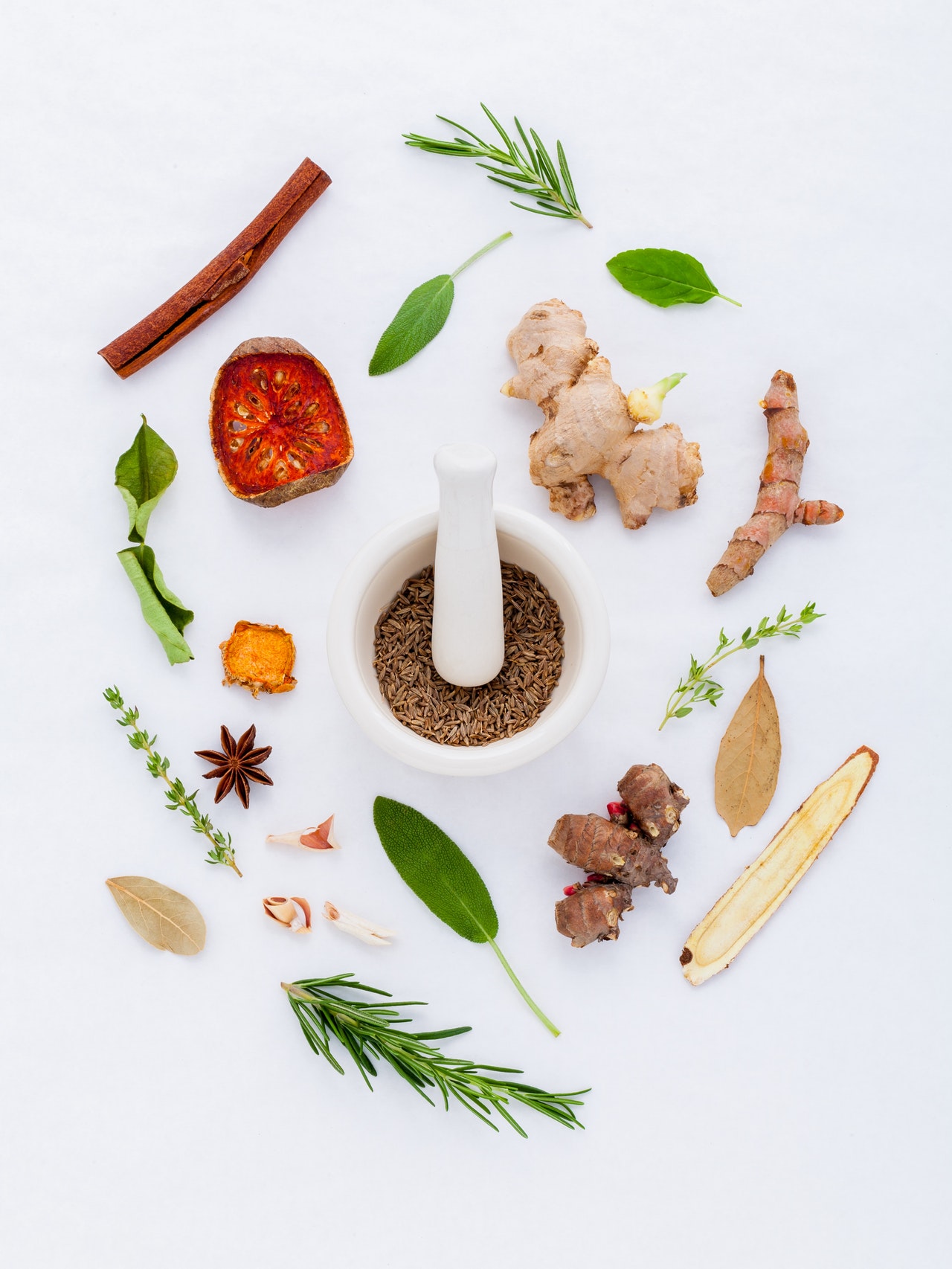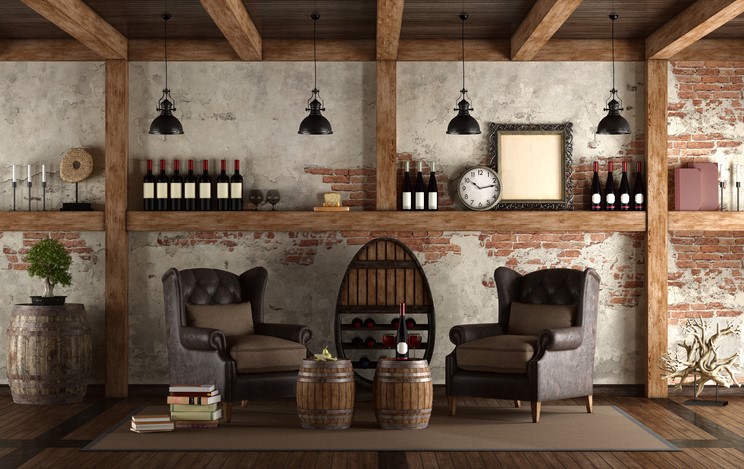Plants like trees, shrubs, and vines are all around us and are an integral part of our environment. Herbs are part of the plant kingdom, but they’re different from common plants and other sprouts. Both herbs and spices have unique properties that make them suitable for human and animal consumption, and many provide a range of amazing benefits, too. Whether you enjoy herbs and spices in your favorite tea or your favorite recipes, these important plants offer a wide variety of perks. You can even grow and blend your very own herbs and spices at home. From an indoor herb garden to an entire greenhouse full, everyone should have certain herbs and spices in their home. Read on to learn more about these unique plants and how they can benefit you.
Fresh herbs vs. dried herbs
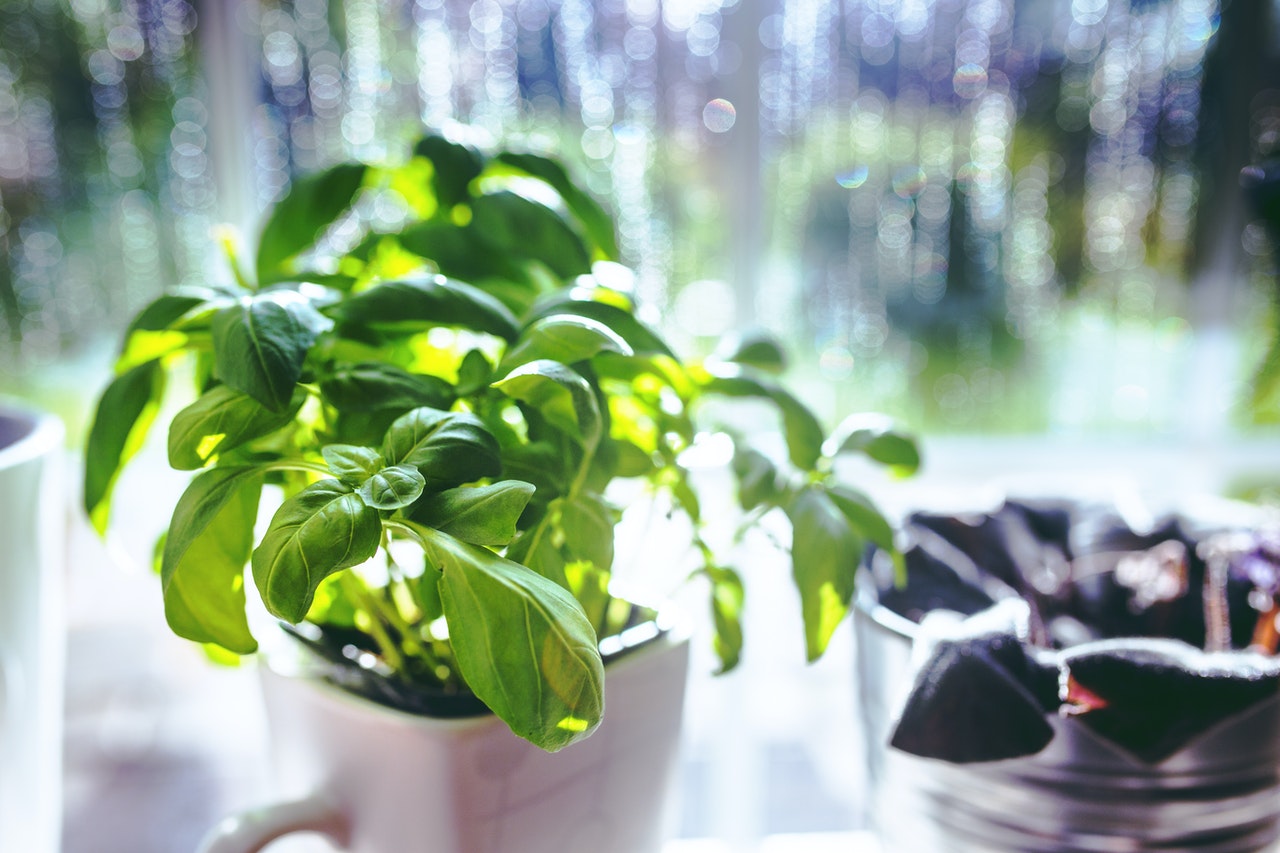
Fresh herbs are harvested directly from the plant and consumed immediately, while dried herbs go through a drying process first and can be stored for later use. Both fresh and dry herbs are beneficial for different reasons.
Differences: Fresh herbs offer a bright, clean flavor that adds a bold taste to recipes or tea. Dried herbs also taste great and may actually provide a few more benefits. That’s because once the herbs are dried, they have a higher concentration of flavor and healthy polyphenols. Dry herbs can also be stored for longer, giving you more use for them whenever you want to enjoy them. However, using the right techniques it’s possible to preserve fresh herbs a little bit longer as well.
How to dry herbs: If you want to make dry herbs, start by removing a few of the stems with the best leaves, then gather them together in a bunch using twine or string. Hang the herbs upside down in a dark area away from moisture and direct sunlight. Once they’re fully dry, you can remove the leaves and store them until you’re ready to use them. Another way to dry herbs is to remove the leaves and place them on a rack or tray. You can then dry them out in the oven or a home dehydrator.
How to store dry herbs: Dry your herbs whole, then grind them as needed to help them last longer. Dried herbs should be stored in an airtight, dark-colored container so that no moisture gets inside. Keep them in a cool area out of direct sunlight until you’re ready to use them. If you store them on a spice rack, just make sure it’s in your pantry or kitchen’s cool, dark area.
Spice and herbal tea and their many benefits

You can enjoy herbal tea and custom spice blends as a hot, soothing beverage. If you’re looking to ease anxiety, try chamomile tea, or for health-boosting properties, sip on clove water. There are many options to explore. Here are some of the many varieties of herbal and spice teas and their benefits.
Detoxifying: Make basil, dandelion root, or ginger tea for a delicious detoxifier. These herbs help to cleanse the liver and your digestive system.
Relaxing: Chamomile, lemon balm, and hibiscus tea all have relaxing properties that can help you feel calm and soothed, which may also help to promote restful sleep.
Energizing: Try a cup of ginger or peppermint tea to improve concentration, focus and to give you a mild boost of energy.
Immunity: Echinacea tea may help to strengthen the body’s immune system and ward off the common cold. Sage tea and rooibos tea is chock-full of antioxidants, which may also help to boost your immune system.
Herbs and spices as DIY scents and air fresheners for your home

Not only do fresh herbs and spices taste great, but they also produce a wide array of pleasant scents for healthy aromatherapy throughout your home.
Popular fragrant herbs and spices for aromatherapy: Some of the most beloved herbs and spices used for fragrance include lavender, mint, rosemary, lemon balm, and ginger. Try several different options alone, or blend them to create your own custom scents at home. The best herbal scents are those that make you feel relaxed or uplifted to boost your mood.
Therapeutic benefits: Each herb or spice offers its own unique benefit. For example, lavender and lemon balm scents will help you feel calm and relaxed at the end of a long day. Mint herbs like fresh peppermint or spearmint are both energizing fragrances that may help you feel more alert. Herbs such as basil and rosemary create a pleasant scent that alleviates stress and anxiety.
Where to use them: You can enjoy fresh herbal aromatherapy anywhere in your home. Try a bundle of dried lavender in the bedroom to help you feel relaxed. Hang a sprig of eucalyptus in your shower, and let the steam release the leaves’ vibrant scent for an uplifting experience. Fresh herbs in a pot can be grown and cultivated in your kitchen while emanating a pleasing aroma. An herbal infusion using a mixture of fresh spices or herbs in oil can be added to a diffuser and placed in a living room, home office, or guest bathroom.
Herbs and spices as DIY cleaners
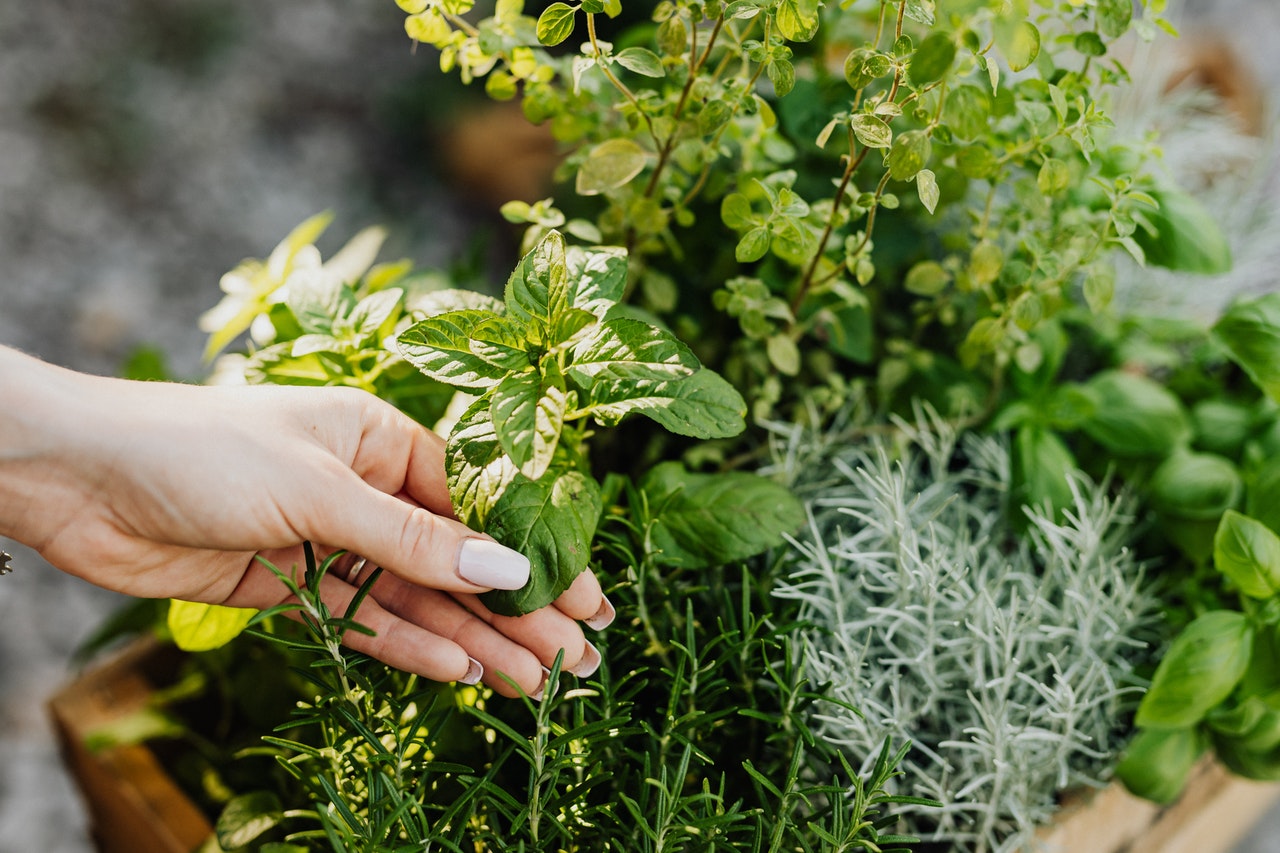
Not only do herbs and spices make great tea and aromatherapy products, but they can also be used to make DIY cleaners for your home. Here are some examples to inspire you.
DIY herbal cleaners: Mix some orange peels and sprigs of rosemary in a jar filled with white vinegar and let it sit for a few weeks, then strain it and add the mixture to a spray bottle. Use it as an all-purpose cleaning solution you can use in the kitchen and bathroom. Combine some baking soda, Castille soap, and fresh rosemary in a jar and use it to scrub scum and dirt from tile and grout. Ginger and lavender both make excellent carpet and fabric deodorizers. Mix them with some baking soda, then sprinkle the mixture onto your carpet and let it sit for 30 minutes before vacuuming it up.
Where to use them at home: Your DIY herbal cleaners can be used for various applications. Infused herbs mixed with a carrier oil or vinegar make excellent all-purpose cleaners for tile and countertops. Powdered herb and spice cleaners work well on fabrics and carpet and can also be made into a paste for scrubbing tough stains out of sinks and floors. Dried herbs are ideal when mixing them to make a cleaner since they won’t leave an oily residue behind that typically comes from fresh leaves.
Herbs and spices as condiments and food enhancers
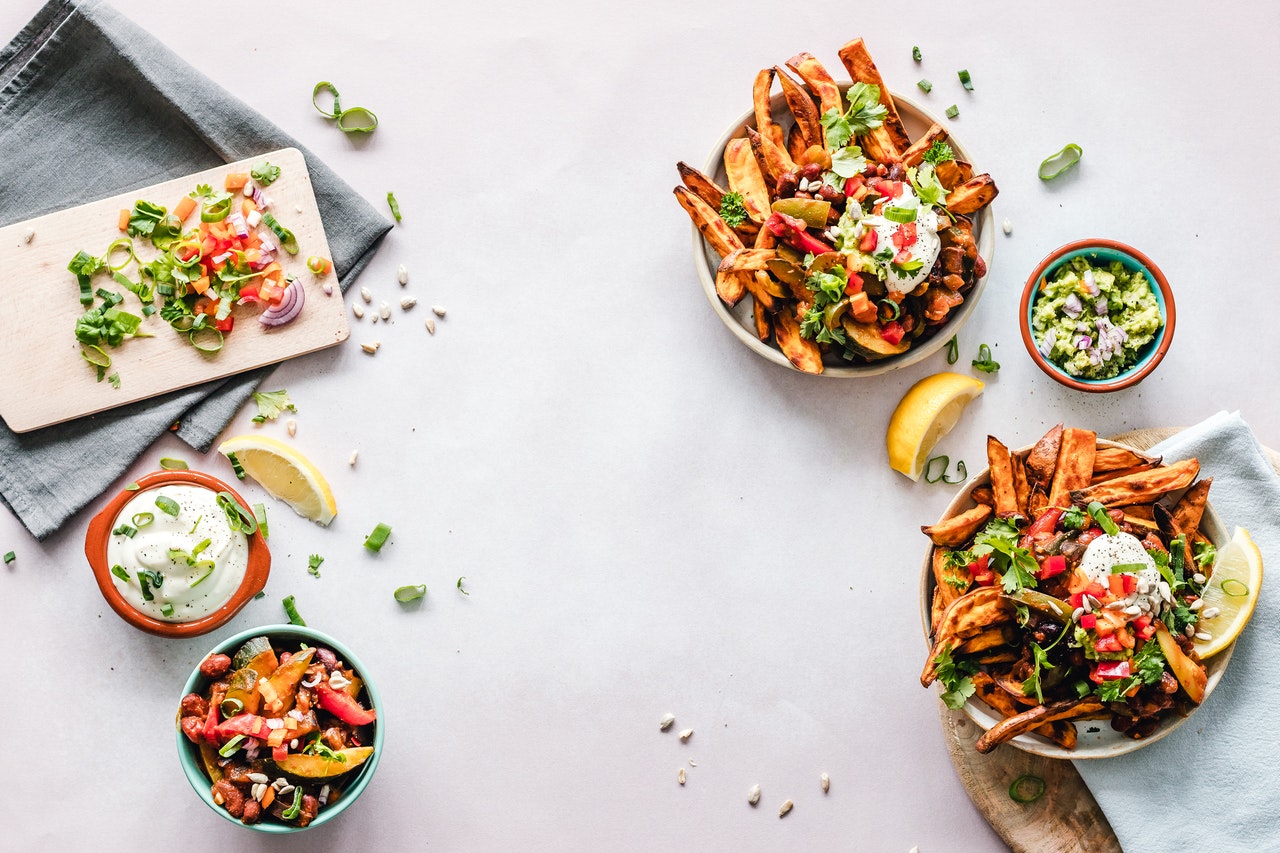
Of course, culinary herbs are perfect for seasoning your favorite dishes. There are a vast array of fresh and dried Korean herbs and spices that you use to boost the flavor profile of any dish. Here are some examples of the best herbs to use in the kitchen.
Uses: Make a custom herbal dry rub for meat preparation before grilling or roasting beef, pork, and chicken. Fresh herbs also make a beautiful topping as a presentation for a variety of dishes. Create some herb infusions to drink water in a different way. Sprinkle fresh cilantro on a Mexican dish for a boost of color and bold flavor. Ground fresh chiles and peppers into a fine powder and add them to your favorite Indian desserts or Mexican dishes and for a fresh, bright taste. A sprig of basil or oregano on Italian dishes adds brilliant color and a vibrant, delicious taste. You can also use it to create oregano and thyme pesto to add flavor to your dishes.
Lastly, start early! Herbs and spices are a great addition to baby meals to help little ones develop their palate early in life (while also getting the nutritional benefits!).
Herbs and spices to add: There are many different options to choose from when incorporating fresh herbs and spices into your recipes. Basil and oregano are excellent when used in Italian cooking. Sage, rosemary, and thyme add rich, deep flavor to roasted chicken, turkey, and pork. Chives bring bright color and a beautiful onion flavor to baked potatoes and other savory dishes. Try some marjoram with lamb, fresh ravioli, or fresh sausage for an added depth of flavor. Lemon balm and mint are perfect for cold beverages as well as added to fresh seafood. Of course, you can’t go wrong with parsley which adds a beautiful presentation and a mild flavor to a vast array of dishes. There are many other spices that can pop the flavor in every dish, like the Indian spices and essentials.
How to make your own powdered spices
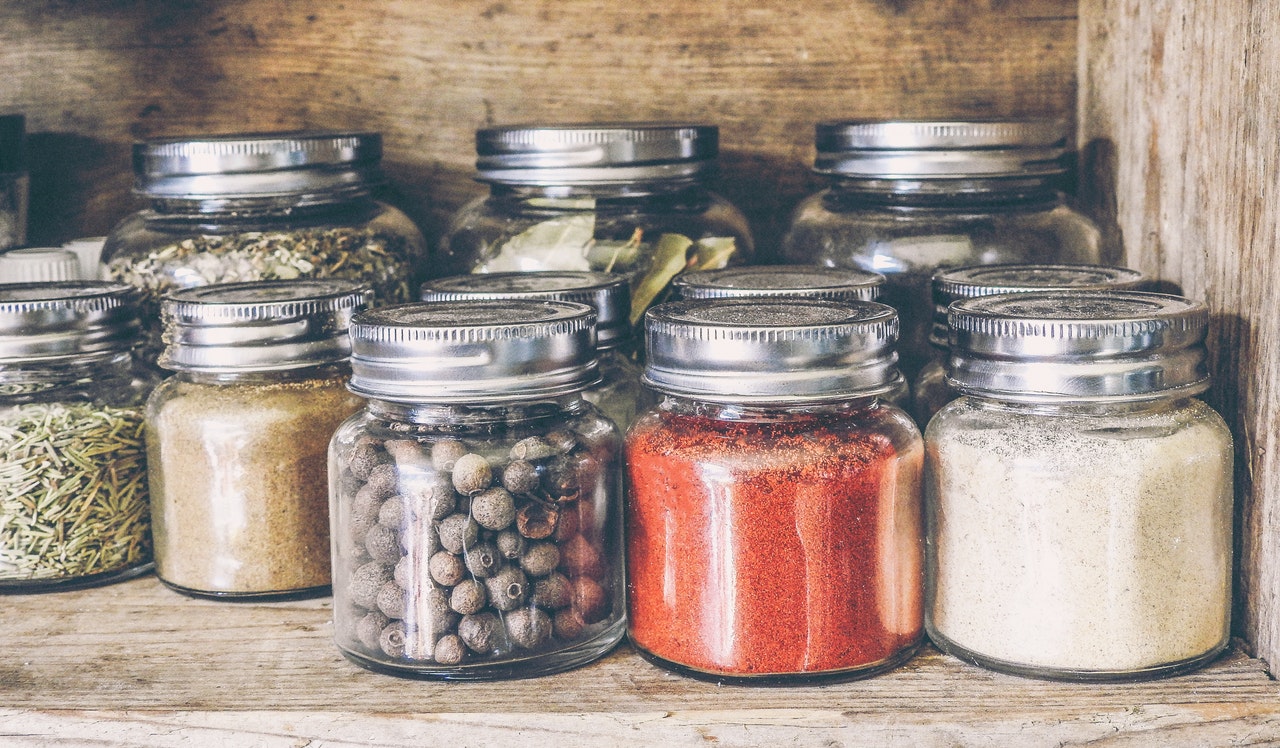
Growing herbs indoors is easy, and you can use the leaves to make your own powdered spices. Here are some quick tips to help you get started.
Making powdered spices: Start by drying your favorite herbs either using the hanging method or placing them on a rack and drying them in the oven. Once the herbs are completely dry, add them to a spice grinder or an herb mill and grind them to a fine powder. Make sure you mix the right proportions depending on the blend you want to use. A Baharat blend is a popular Middle Eastern spice that consists of paprika, finely ground black pepper, cumin, cloves, coriander, cardamom, nutmeg, and star anise. Sprinkle it on meat or fish or use it to make a delicious and flavorful marinade. If you have any leftover spices, be sure to store them in an airtight container and label them accordingly for future use. Here are some of the most popular spices and herbs of the Hungarian kitchen.
Herbs and spices are a wonderful way to enjoy a variety of benefits at home. These incredible plants are useful for more than just cooking, from delicious and soothing herbal teas to amazing aromatherapy and skin care. When you grow and dry your own herbs and spices at home, you’ll get to discover their many amazing benefits for yourself.
